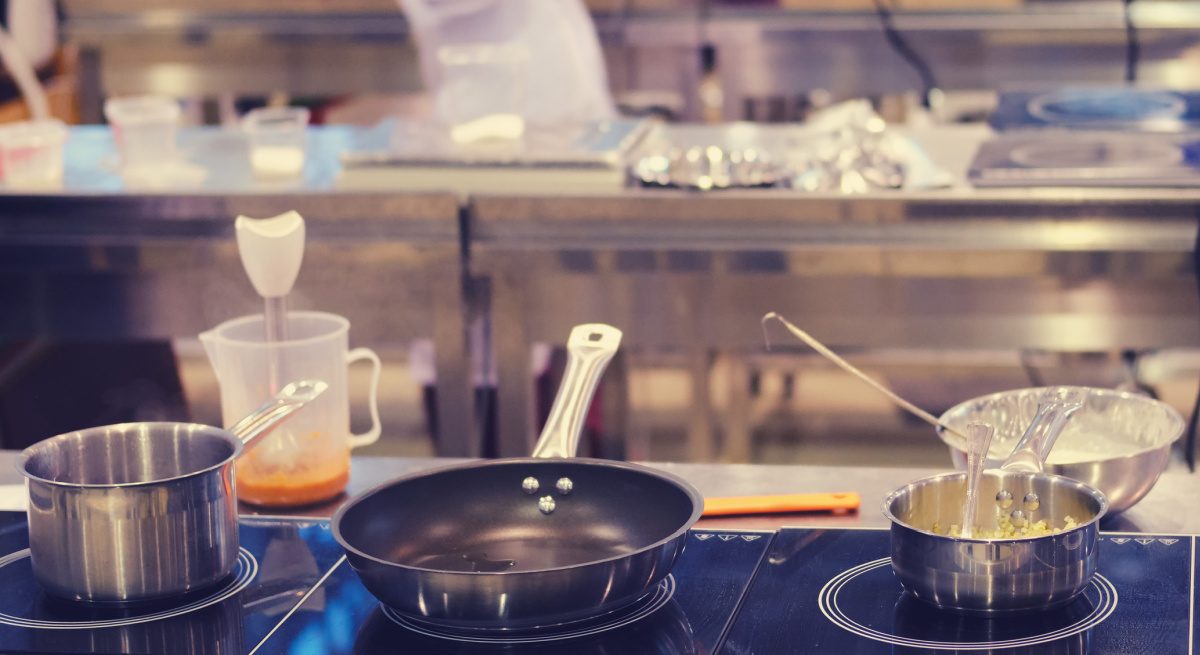Ghost Kitchens to Open Up New Avenues for Restaurateurs
5 Min Read By Nandini Roy Choudhury
Ghost kitchens have gained significant popularity in the past few years, especially during the pandemic and post-pandemic era. Various existing and new companies are adopting this trend to reduce operational expenses and risks. As per a recently published report by Future Market insights, the Takeaway and Delivery Food market is going to witness accelerated demand in the coming years with online food platforms.
These platforms are gaining popularity among people who wish to dine with their families at home and still wish to enjoy the flavor and quality of restaurant food. In this blog, we will discuss the various facets being utilized to enhance the entire operation of the ghost kitchen efficiently. The reasons for the accelerated growth of this idea, the contribution of POS to these kitchens, the display systems to make the operations easier, and the automated operations used in the inventory as well in the kitchen for easy food management- are some of the ideas that will be discussed in the following paragraphs.
Ghost Kitchen to emerge as the New Normal in the Post-Pandemic Era?
As restaurants shuttered across the world due to the pandemic in 2020, deliveries and takeout orders soared. Consequently, many restaurants began outsourcing their delivery and takeout operations to off-premises kitchens. For instance, Denny's, an American table service diner-style restaurant chain, launched two ghost kitchen brands in 2021 to increase its market share. The first brand, The Burger Den, offered some of the company's favorite products and some signature items. The Melt Down, the second brand, featured handcrafted sandwiches. The concept was tested in 23 markets exclusively through DoorDash. The result was a 25% percent spike in sales in just two months.
Moreover, availability of online foodservice apps, together with third-party delivery services, has made it easier for customers to forego a trip to the restaurant. According to the National Restaurant Association, three out of five Americans prefer to get food delivered or taken out at least once a week. Among these five customers, every second individual remarks they would like to buy meal kits from these ghost kitchens. For example, the ghost kitchen model from Postmates weaves together top-performing food brands, caterers, and its marketplace. The Postmates app is responsible for finding employees, managing inventory from suppliers, operating the business, and operating the kitchen, while the brands receive a royalty from its sales. Postmates' rapid growth and penetration in the virtual kitchen market has attracted so much interest that Uber planned to buy Postmates in late 2021 for $2.65 billion.
The rise in the number of food delivery apps have caused online food consumption to grow 300 percent faster than dine-in consumption in the last five years. Ghost kitchens are a great way to quickly start a restaurant, but they're also a great way to transition into a market. As a result, the brand can gain brand loyalty without wasting time behind a brick and mortar restaurant. Dog Haus, for example, began with just two stores but now operates over 10 ghost kitchens worldwide. Since March 2020, the company has launched seven new proprietary microbrands under a corporate entity called The Absolute Brands. Each virtual concept was based on a specific Dog Haus specialty, and each had its own menu. This will continue to be a company's goal to increase the number of virtual stores.
Various companies have not only extended their operations to online delivery and takeaway but also introduced some innovative technologies to enhance their overall operations. This was solely done to increase the efficiency of the company in generating more revenues.
Eliminating 3rd Party App Charges with Kitchen Point-of-Sale (POS) Systems
A point of sale system is primarily used by restaurants to accept cash and credit card payments and to manage internal communications. POS systems have evolved into operations hubs. Online ordering and delivery in particular became more relevant as POS providers improved their software offerings so restaurants could avoid costly third-party fees. The most popular POS systems will likely be those that integrate digital ordering. With enhanced POS systems, it becomes a lot easier for the ghost kitchen operators to take a note of their various timings- the employee log in and log out or the food preparation time. These systems also have the option of tracking payroll using the integrated time clock. With most restaurant POS systems, the waiters can directly enter orders and request them to be sent to the kitchen. This will ensure that errors in the kitchen are reduced and staff and food preparation efficiency increase.
Enhancing Kitchen Services with Kitchen Display Systems (KDS) for Enhanced Customer Experience
Using KDS solutions, kitchen staff can receive orders directly from the customers. Inefficiencies and errors caused by the use of intermediaries, like miscommunication caused by mouth-to-mouth communication or writing down orders on a notepad, are practically eliminated. Restaurants can completely customize the software to suit their needs. The system allows for the adjustment of things such as layouts, timers, notifications, and displays who has access to a particular order. Using KDS for restaurants, the various orders and requests from customers can be seamlessly integrated into the restaurant's entire ordering system.
Automated Inventory Management to Avoid Overstocking and Food Wastage
Automation has made it easier for restaurants to turn into ghost kitchens. With the ghost kitchen approach, companies will have to keep track of their inventory management to avoid overstocking or wastage and meet the demands of their customers seamlessly. Thus, with an automated solution, it is possible to maintain an accurate inventory by tracking the number of ingredients used in every dish and keeping track of how many of each dish you have sold.
Even when stocks start approaching critical levels at the end, the automated systems suggest placing an order with a new vendor. Ghost kitchen operators that operate from multiple locations can use an automated solution to synchronize inventory and share data.
F&B inventory management software has proven to be efficient for many ghost kitchens. Without leaving the kitchen, ingredients are processed and moved in and out of storage rooms. The tracking of ingredient depletion and production of stackable items is possible via the automated counting system. This system is equipped with a barcode scanner. It can easily be used to scan packages during deliveries or when doing counts. As soon as the data is entered, it is automatically logged into the inventory module and the quantities and values are adjusted. Through this system, alerts will be given when stocks are declining and when they are overstocked.
Using machine learning technology, a ghost kitchen manager can have exact knowledge about what has been used so far and what will be needed soon. Food industry automation solutions can manage more than just the ingredients. They can also manage dishes, cutlery, and other stock items.
Ghost kitchens can make remarkable contributions to the world of food delivery, takeaway, and restaurant dining. From taking up orders and fulfilling them aptly to automating inventory management, this approach has a long way to go. To date, ghost kitchens have proven to be a viable alternative for dine-in restaurant experiences. These advancements, however, come with inefficiencies within the operations that must be addressed as well. A good way to identify and eliminate inefficiencies is to monitor order progress. Your customers will notice and likely not return if you don't fulfill orders promptly.
By using 5G connectivity, ghost kitchen chefs can utilize smart restaurant equipment, IOT sensors, and robot helpers to streamline operations. Sensors, for example, can monitor how many delivery containers are needed during rush hours or how many eggs are in the refrigerator. In addition, the robot does tasks that can be automated, such as toasting hamburger buns. With 5G, the robots can communicate more easily with their potential sensors and operate at a lower latency.
From the standpoint of customer experience, ghost kitchen brands can quickly and easily update their website and social media on a daily, or even hourly, basis. This allows them to remain in constant contact with their customers. Meanwhile, it becomes easier for customers to track their orders in real-time, through the third-party application or directly through the company's website. Although robots serving food at restaurants and drones delivering food to homes are still in the realm of science fiction, several automation tools now exist to improve the food and restaurant industries. The various restaurants will be able to better manage operations and resources by implementing automation in the food industry. As a result of this efficiency, the food sector is likely to increase revenues and provide a better customer experience with the ghost kitchen approach.


